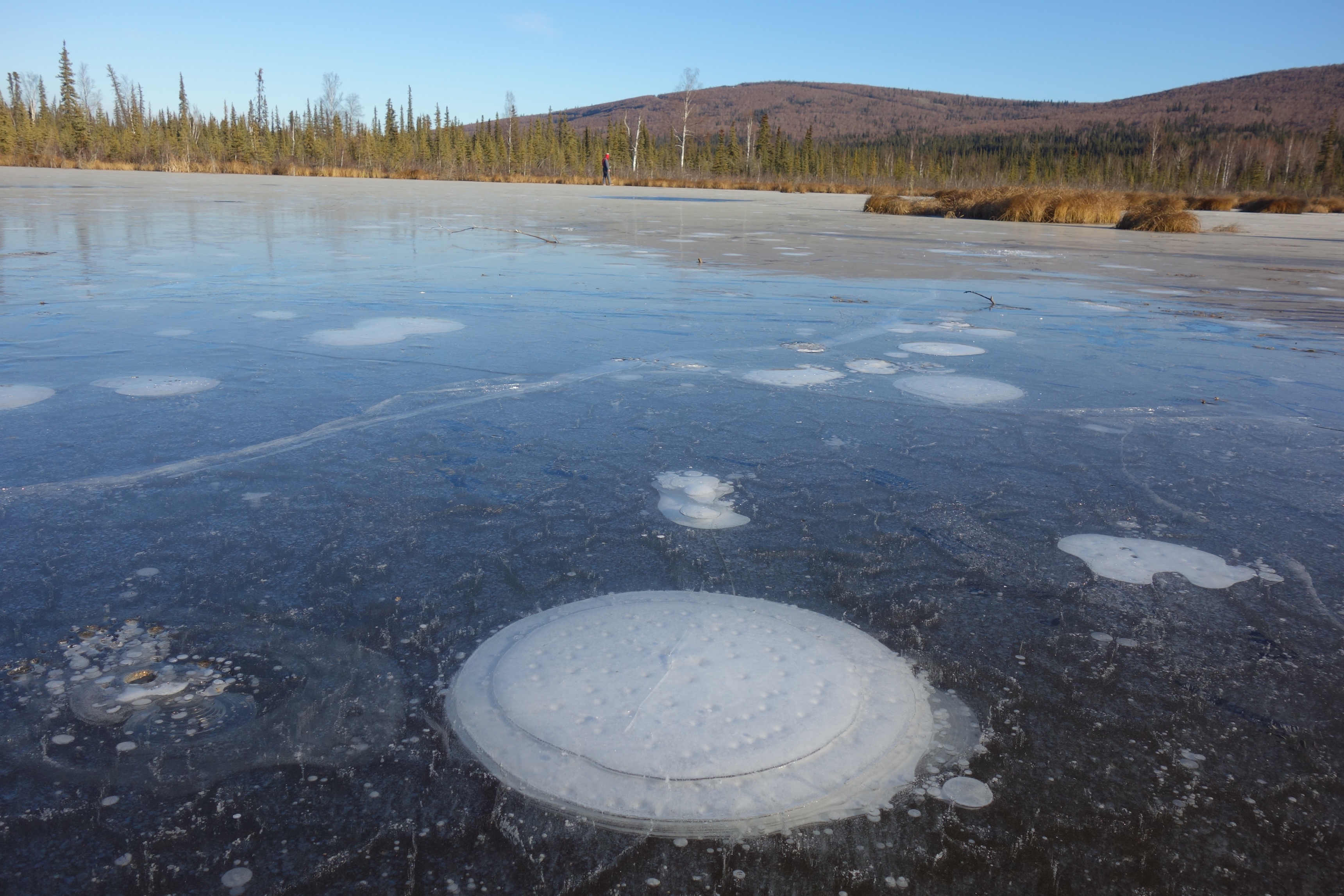Melting Permafrost Below Arctic Lakes Is Even More Dangerous to the Climate, NASA Warns
Scientists have worried for years that rising temperatures will free carbon trapped in frozen soil in the Arctic, accelerating the pace of climate change — but now they believe abrupt thawing below lakes is even more dangerous.
That's the finding of a new paper published as part of a 10-year NASA collaboration to study how climate change will play out in the icy Arctic region.
"We don't have to wait 200 or 300 years to get these large releases of permafrost carbon," lead study author Katey Walter Anthony, an ecologist at the University of Alaska, Fairbanks, said in a NASA statement about the research. "Within my lifetime, my children's lifetime, it should be ramping up. It's already happening but it's not happening at a really fast rate right now, but within a few decades, it should peak." [Climate Change Strengthens Earth's 'Heartbeat' — and That's Bad News
The new research is based on measurements and models of how climate change and melting permafrost interact. Specifically, the team of scientists looked at permafrost melting below bodies of water known as thermokarst lakes.
The team behind the new research measured carbon release at 72 different locations on 11 thermokarst lakes across Siberia and Alaska, plus five locations without lakes, to calculate how much greenhouse gas was being produced and how old the carbon it contained was. Then, they used this data to make sure the models they were building were on the right track.
Here's the problem: When permanently frozen dirt melts, the bacteria trapped inside it become active again, munch through whatever organic material is in reach, and produce carbon dioxide and methane, which are both powerful greenhouse gases
But when that happens below thermokarst lakes, the process is even grimmer because the water at the surface speeds up the melting below. The released gases, built with carbon atoms between 2,000 and 43,000 years old, quickly rise up through the lake and into the atmosphere.
Breaking space news, the latest updates on rocket launches, skywatching events and more!
"Within decades you can get very deep thaw-holes, meters to tens of meters of vertical thaw," Walter Anthony said in the statement. "So you’re flash thawing the permafrost under these lakes. And we have very easily measured ancient greenhouse gases coming out."
Moreover, the team also found that this abrupt thawing was still a concern even under a scenario in which humans tried to rein in their greenhouse-gas production and slow climate change. And, of course, the more permafrost melts, the faster the melting continues — making all this grim news indeed.
The research is described in a paper published Wednesday (Aug. 15) in the journal Nature Communications.
Email Meghan Bartels at mbartels@space.com or follow her @meghanbartels. Follow us @Spacedotcom, Facebook, or Google+. Original article on Space.com.

Meghan is a senior writer at Space.com and has more than five years' experience as a science journalist based in New York City. She joined Space.com in July 2018, with previous writing published in outlets including Newsweek and Audubon. Meghan earned an MA in science journalism from New York University and a BA in classics from Georgetown University, and in her free time she enjoys reading and visiting museums. Follow her on Twitter at @meghanbartels.

